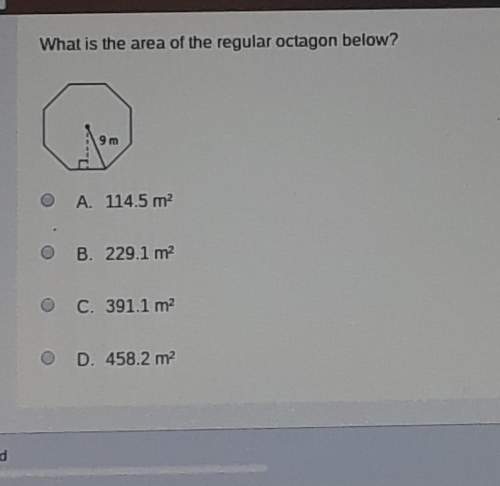
Mathematics, 14.05.2021 04:50 dp845095
ABCD is a rhombus. The diagonals intersect at point E. If angle CDB= 6x and angle ACD= 2x+10, find x.

Answers: 3
Another question on Mathematics

Mathematics, 21.06.2019 17:00
What is the difference between the points (4, 7) and (4, -5)? a. 0 units b. 2 units c. 4 units d. 12 units
Answers: 1

Mathematics, 21.06.2019 21:00
Describe how making an ‘and’ compound sentence effects your solution set
Answers: 1

Mathematics, 21.06.2019 21:10
Given: lines a and b are parallel and line c is a transversal. prove: 2 is supplementary to 8 what is the missing reason in the proof? statement reason 1. a || b, is a transv 1. given 2. ∠6 ≅ ∠2 2. ? 3. m∠6 = m∠2 3. def. of congruent 4. ∠6 is supp. to ∠8 4. def. of linear pair 5. ∠2 is supp. to ∠8 5. congruent supplements theorem corresponding angles theorem alternate interior angles theorem vertical angles theorem alternate exterior angles theorem
Answers: 3

Mathematics, 21.06.2019 22:30
Which of the functions below could have created this graph?
Answers: 1
You know the right answer?
ABCD is a rhombus. The diagonals intersect at point E. If angle CDB= 6x and angle ACD= 2x+10, find x...
Questions





Mathematics, 06.10.2019 13:00


Business, 06.10.2019 13:00



Mathematics, 06.10.2019 13:00

Biology, 06.10.2019 13:00



History, 06.10.2019 13:00


Health, 06.10.2019 13:00

Geography, 06.10.2019 13:00

Mathematics, 06.10.2019 13:00


Spanish, 06.10.2019 13:00


 . So that ΔCED is a right triangle, and that;
. So that ΔCED is a right triangle, and that; (sum of angles in a triangle)
(sum of angles in a triangle)



